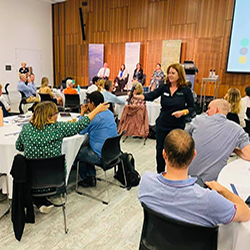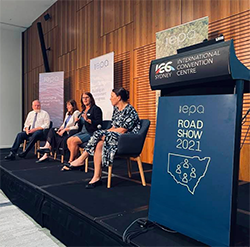How does this new EPA central triage system work and why has the EPA moved to this new system? Will this cause more delays and what support can councils and licensees receive from the Hub?
The EPA has a major role in responding to a wide range of environmental incidents reported to us by the public, industry and emergency services. We also regulate major industries across NSW that generate a range of regulatory tasks and enforcement actions under our risk based licencing system. The EPA has created a new central state-wide operational team “The Hub” to deliver agile ways of working. The Hub looks at work allocation across our networks, helps prioritise the efforts of our regulatory teams, provides guidance on difficult issues and adjusts to changing priorities. It consists of experienced operations staff who will improve decision making, collaboration and reduce risk.
We recognise this represents a significant change to the operating systems and culture that you may have previously experienced. Many changes to our internal and external systems to facilitate this agile approach have already been implemented and further work is still required. As we rapidly evolve to this new approach, we are asking you to work with us in a fundamentally different way on our journey to be a world class regulator.
How it works
The Hub meets regularly with the operations leadership team in a "huddle". At these huddles, work task allocations are discussed, assessed and assigned to work units. The Hub monitors the delivery of the work to continually improve decision making, identify any roadblocks that need clearing and prepare for the next priority.
The allocation of work at the Huddles considers the capability and capacity of each work unit, sharing staff expertise and stakeholder considerations. We have moved away from strict geographical boundaries for work allocation for each EPA office and the previous “responsible officer” model. We are working to be more agile and responsive across any location in NSW. As a result, stakeholders may no longer deal with a single officer or office as they may have done so in the past.
The EPA has a range of case management and information management systems that allow responsive interactions across all operations staff in NSW, irrespective of officer location.
The EPA Environment Line provides a central point of contact for the EPA. This includes incident reports and licensing enquiries. Please phone 131 555 or email at info@epa.nsw.gov.au when you would like to contact us.
Why we moved to a Hub system
During our stakeholder surveys the EPA received constructive feedback seeking improvements to our consistency in approaches and responsiveness to a wide range of matters.
The COVID-19 pandemic, recent bush fire and flood responses have also highlighted the importance of being able to adapt to change and shift to new work approaches quickly. By moving away from a strictly geographical basis for work allocation we have greater “surge capability” via the daily huddles to respond to issues as they arise.
The Hub is improving our decision making, reducing risk and enhancing collaboration within our organisation. By helping to schedule work across our teams the Hub will help the EPA better capture emerging issues, identify important trends and prevent regulatory capture. It will also help ensure a consistent approach to our regulation.
The Hub has adapted the spirit of agile project management to reflect the types of work coming into the EPA. This allow us to break large projects down into more manageable tasks tackled in short iterations or sprints.
We are aware that some companies operate similar state-wide businesses (for example concrete batching plants or quarries). Many pollution or environmental incidents are not unique to locations. The Hub system allows us to draw on staff expertise and knowledge of operations across NSW. It is not okay for a single EPA officer at a single location to be the only person aware of a licence or activity or issue. It should not matter where you are located in NSW, we believe you should get a consistent and timely level of service.
The Hub, established in September 2020, does not impact existing critical functions, such as incident management (during business and after hours).
 What we heard
What we heard Participants welcomed hearing about the new EPA structure and strategy as well as the functionality of the Hub. We also heard from stakeholders that they would like to collaborate more with the EPA and work together to learn and build capability. We have responded to feedback by making a number of changes, including updating guides and increasing engagement opportunities.
Participants welcomed hearing about the new EPA structure and strategy as well as the functionality of the Hub. We also heard from stakeholders that they would like to collaborate more with the EPA and work together to learn and build capability. We have responded to feedback by making a number of changes, including updating guides and increasing engagement opportunities. 
